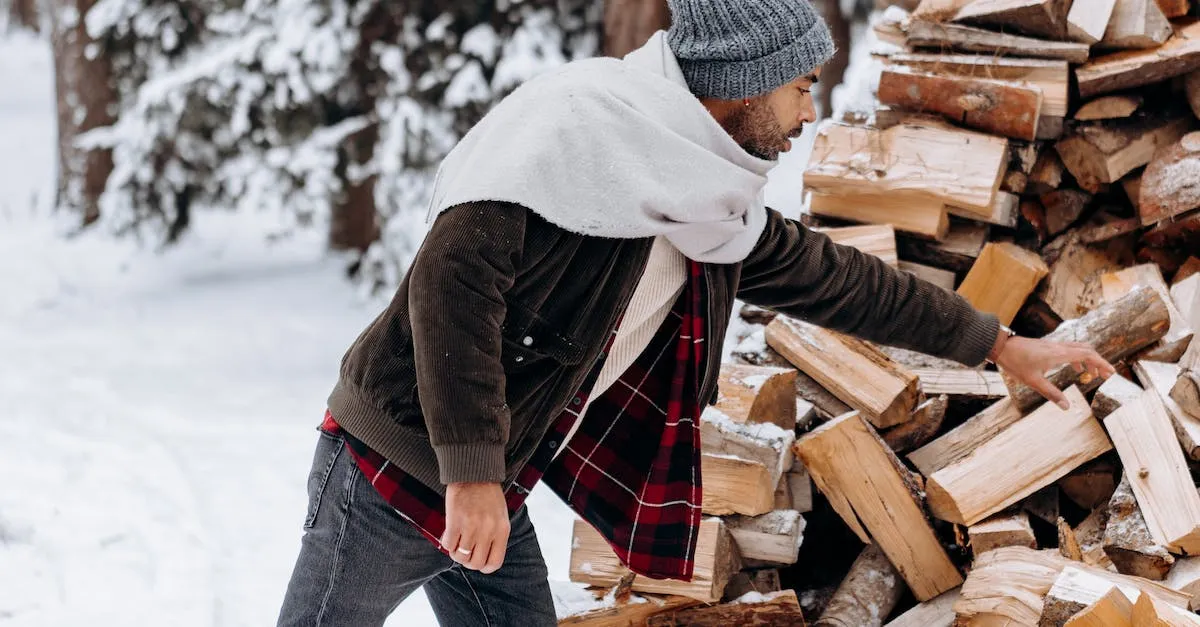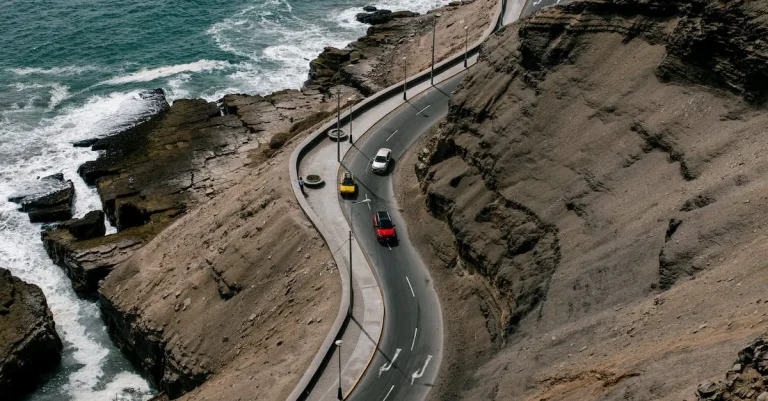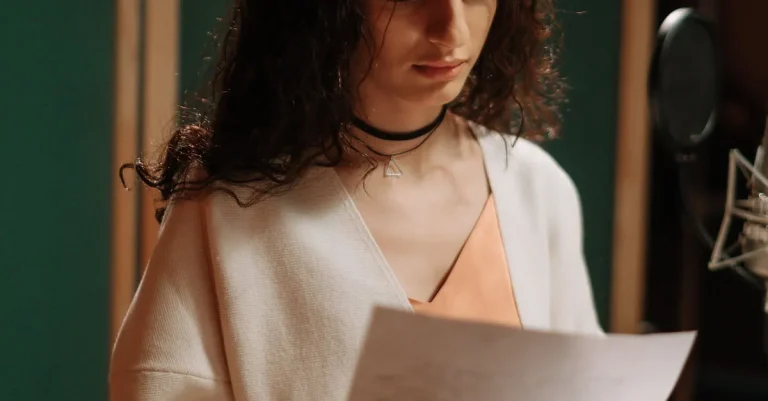How Cold Does It Get In Los Angeles? Breaking Down La’S Mild Winters
With its sunny skies and palm trees, you probably think it never gets very cold in Los Angeles. But LA does experience cooler temperatures in winter, especially at night and in the valleys. If you’re wondering how cold it truly gets in the City of Angels, read on for a complete breakdown.
If you’re short on time, here’s a quick answer: Los Angeles winters are mild, with average lows in the 40s and 50s F. Cold snaps can drop temps into the 30s but are uncommon.
In this approximately 3000 word guide, we’ll cover everything you need to know about LA winters including average temps, climate differences across the region, record lows, what to wear, activities, and more.
Average Winter Temperatures in Los Angeles
Los Angeles is known for its mild and pleasant climate throughout the year, but how cold does it really get during the winter months? Let’s break down the average winter temperatures in different areas of LA.
Downtown LA
In downtown Los Angeles, the winter temperatures are relatively mild compared to other parts of the city. The average high temperature during the winter months hovers around the mid-60s°F (around 18-20°C), while the average low temperature can drop to the mid-40s°F (around 7-9°C).
It’s not uncommon to see locals and tourists alike enjoying outdoor activities and dining al fresco even during the winter season.
Beaches
When it comes to the beaches in Los Angeles, the winter temperatures tend to be slightly cooler due to the ocean breeze. However, don’t expect freezing temperatures or snow-covered shores. The average high temperature at the beach during winter ranges from the mid-60s°F (around 18-20°C) to the low 70s°F (around 21-24°C), while the average low temperature can drop to the low 50s°F (around 10-12°C).
Despite the cooler temperatures, the beaches of LA still attract visitors who enjoy the scenic beauty and peacefulness of the coastal areas during the winter months.
Valleys
The valleys in Los Angeles, such as the San Fernando Valley, experience slightly cooler temperatures compared to downtown and the beaches. The average high temperature in the valleys during winter ranges from the low to mid-60s°F (around 15-18°C), while the average low temperature can drop to the low 40s°F (around 4-6°C).
These cooler temperatures make the valleys a great destination for hiking and outdoor activities during the winter season.
Mountains
If you’re looking for colder winter temperatures and even the possibility of snow, head to the mountains surrounding Los Angeles. Areas like Big Bear and Mount Baldy offer winter wonderlands with average high temperatures in the 40s°F (around 4-9°C) and average low temperatures dropping below freezing.
These destinations are popular for winter sports such as skiing and snowboarding, attracting both locals and tourists seeking a snowy escape from the city.
It’s important to note that these are average temperatures and actual weather conditions may vary. For the most up-to-date and accurate weather information in Los Angeles, it’s recommended to check reliable sources such as the National Weather Service website (www.weather.gov) or local news stations.
Historic Cold Snaps
While Los Angeles is known for its mild and pleasant weather, it does experience occasional cold snaps that can take residents by surprise. Let’s take a look at some of the most notable historic cold snaps that have occurred in the City of Angels.
The Freeze of 1913
One of the most significant cold snaps in Los Angeles’ history was the Freeze of 1913. During this event, temperatures plummeted to record lows, reaching as low as 28 degrees Fahrenheit (-2 degrees Celsius) in some areas.
This sudden drop in temperature caused widespread damage to crops and vegetation, and even led to the death of some livestock. It was a stark reminder that even in a city known for its warm climate, winter can still pack a punch.
Cold Snap of 1962
The Cold Snap of 1962 is another memorable event in Los Angeles’ history. In this particular winter, the city experienced a prolonged period of unusually cold weather. Temperatures dipped below freezing for several consecutive nights, causing havoc for residents who were unprepared for such conditions.
This event prompted many LA residents to invest in winter clothing and heating equipment, as well as to take precautions to protect their homes and gardens from the cold.
December 1990 Freeze
In December 1990, Los Angeles once again found itself in the grip of a freezing cold snap. This particular event brought unusually low temperatures to the region, with some areas experiencing temperatures in the low 30s Fahrenheit (around 0 degrees Celsius).
While it may not seem extreme compared to other parts of the country, it was a significant departure from the city’s typical mild winters. The December 1990 Freeze served as a reminder that even in Southern California, winter weather can be unpredictable.
Impacts and Preparing for Cold
These historic cold snaps had various impacts on the city and its residents. Crop damage, increased energy consumption for heating, and disrupted travel and transportation were just a few of the consequences.
However, they also served as valuable lessons on the importance of being prepared for colder weather, no matter where you live.
Residents of Los Angeles have since learned to be more proactive in preparing for cold snaps. They invest in warm clothing, insulate their homes, and take steps to protect their gardens and outdoor plants.
Local authorities also take measures to ensure that roads and infrastructure are well-maintained during cold spells to minimize disruptions.
While these cold snaps are relatively rare occurrences in Los Angeles, they demonstrate the importance of being prepared for any weather conditions. So, if you’re planning a visit to LA during the winter months, don’t forget to pack a jacket, just in case Mother Nature decides to surprise you with a chilly day!
Typical Winter Weather
Los Angeles, known for its sunny and warm climate, experiences mild winters compared to other parts of the country. However, it is not completely immune to cooler temperatures and occasional rainfall. Let’s take a closer look at the typical winter weather in the City of Angels.
Rainfall
Although Los Angeles is famous for its lack of rainfall, winter months do bring some precipitation to the region. On average, the city receives around 10 inches of rain per year, with the majority of it falling between November and March.
While this may not seem like much compared to other cities, it is enough to make the city greener and add a refreshing touch to its landscape.
Wind
During the winter months, Los Angeles experiences occasional gusty winds, especially in areas closer to the coast. The Santa Ana winds, known for their warm and dry nature, can also make an appearance, bringing with them a sense of excitement and change in the air.
These winds can be strong, but they are generally not a cause for concern for residents.
Fog and Frost
While Los Angeles is not known for its foggy mornings, there are instances when coastal areas can experience a thick blanket of fog during the winter months. This phenomenon is more common in the early mornings and can create a mystical ambiance along the coast.
Frost, on the other hand, is a rare occurrence in Los Angeles. Due to its mild climate, temperatures rarely drop low enough for frost to form. However, in some higher elevation areas, such as the mountains surrounding the city, frost can be seen on colder winter mornings.
For more information on Los Angeles’ winter weather, you can visit the Weather Channel website, which provides up-to-date weather forecasts and historical data for the city.
What to Wear
While Los Angeles is known for its mild winters, it’s still important to dress appropriately to stay comfortable during the cooler months. Here are some tips on what to wear in LA’s colder weather:
Layering
Layering is key when it comes to dressing for LA’s winters. The temperature can vary throughout the day, so it’s important to be able to add or remove layers as needed. Start with a lightweight base layer, such as a long-sleeve shirt or thermal top, and then add a sweater or jacket on top.
This way, you can easily adjust your clothing to stay comfortable throughout the day. Don’t forget to bring a scarf or shawl that can be easily thrown on or taken off as needed.
Essential Winter Gear
While a heavy winter coat may not be necessary in LA, it’s still a good idea to have a few essential winter items on hand. A lightweight, waterproof jacket is a must-have, as it can protect you from any unexpected rain showers.
Additionally, gloves and a hat can help keep your extremities warm when the temperature drops. It’s also a good idea to invest in a good quality umbrella, as LA does experience occasional winter rain.
Footwear Considerations
Choosing the right footwear for LA’s winters can be a bit tricky. While snow boots may not be necessary, it’s still important to have shoes that can handle rain and keep your feet dry. Opt for waterproof shoes or boots that have good traction, as the streets can become slippery when wet.
It’s also a good idea to have a pair of comfortable walking shoes or sneakers for those days when the weather is mild and you want to explore the city on foot.
For more information on dressing for LA’s winters, you can visit www.discoverlosangeles.com.
Enjoying an LA Winter
While Los Angeles is known for its warm and sunny weather year-round, there is still a winter season that brings slightly cooler temperatures to the city. Although it may not be as cold as other parts of the country, there are still plenty of opportunities to enjoy the unique charm of an LA winter.
Outdoor Activities
Even during the winter months, Los Angeles offers a wide range of outdoor activities for residents and visitors to enjoy. With mild temperatures averaging around 60°F (15°C) during the day and cooler evenings, it’s the perfect time to explore the city’s beautiful parks and hiking trails.
Take a leisurely stroll along the beaches or rent a bike to enjoy the scenic coastal views. You can also try your hand at outdoor sports such as golf or tennis, as many of the city’s outdoor facilities remain open throughout the year.
Ways to Embrace the Cooler Weather
Although it may not be freezing cold, there are still ways to embrace the cooler weather in Los Angeles. Take advantage of the lower temperatures by cozying up in a café with a hot cup of coffee or enjoying a delicious bowl of soup at a local restaurant.
It’s also the perfect time to explore the city’s museums and art galleries, as they offer a warm and cultural escape from the cooler temperatures. Don’t forget to layer up with a light jacket or sweater, as the evenings can get a bit chilly.
Annual Events
Los Angeles is known for its vibrant event scene, and the winter season is no exception. From holiday parades and festivals to outdoor ice skating rinks, there is always something happening in the city during this time of year.
One of the most popular events is the Rose Parade on New Year’s Day, where elaborate floats adorned with flowers make their way down the streets of Pasadena. Additionally, the city is home to a variety of winter-themed festivals and markets, offering everything from holiday shopping to festive food and drinks.
So, while Los Angeles may not experience the freezing temperatures and snowfall that other parts of the country do, there is still plenty to enjoy during an LA winter. Whether you’re exploring the great outdoors, embracing the cooler weather, or attending one of the city’s many annual events, there’s no shortage of ways to make the most of the mild winters in the City of Angels.
Conclusion
While LA is known for its perpetually sunny weather, the city sees cooler temps and chilly nights during the winter months. With layers, the right gear, and a sunny attitude, you can comfortably enjoy the many activities a Los Angeles winter has to offer.








